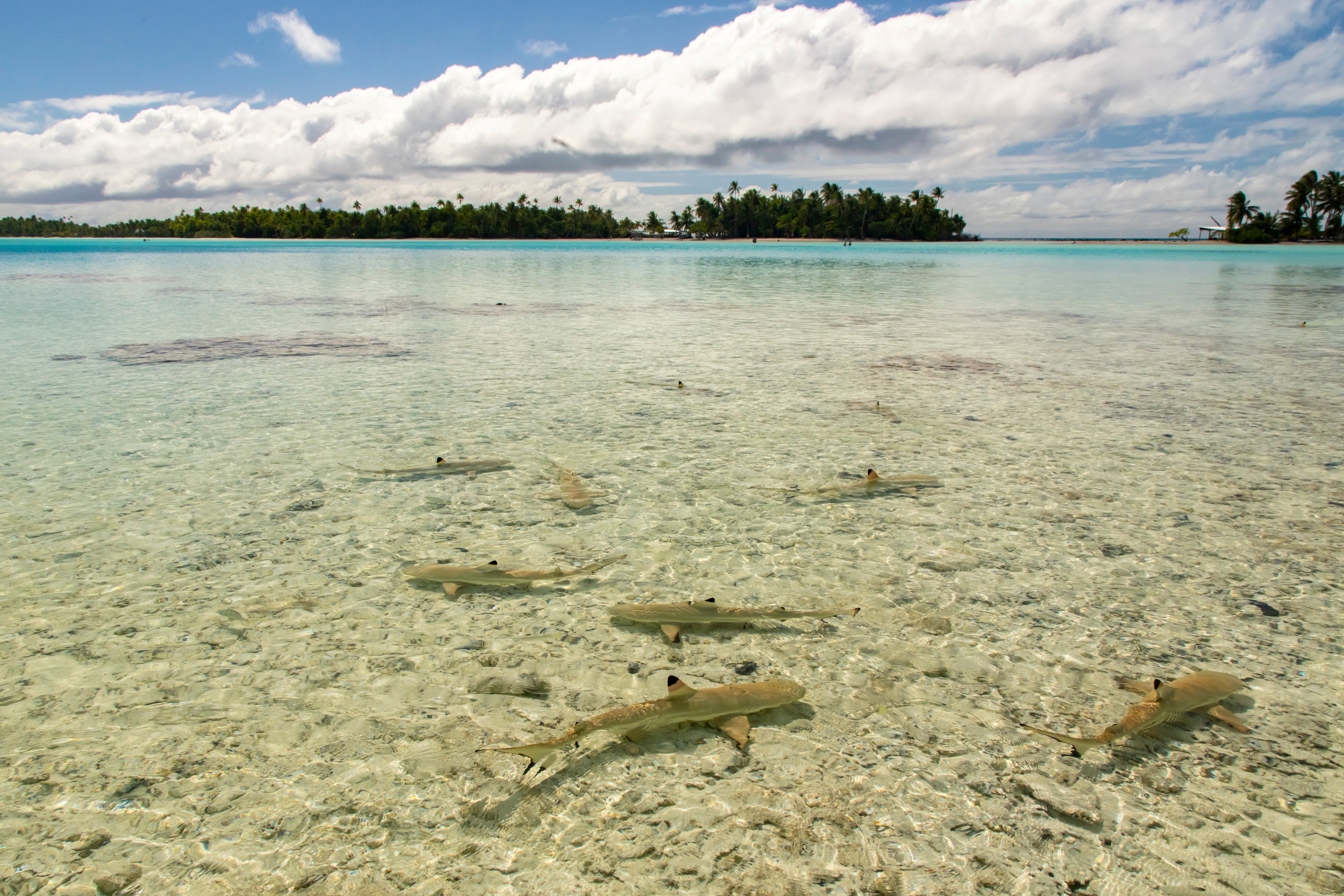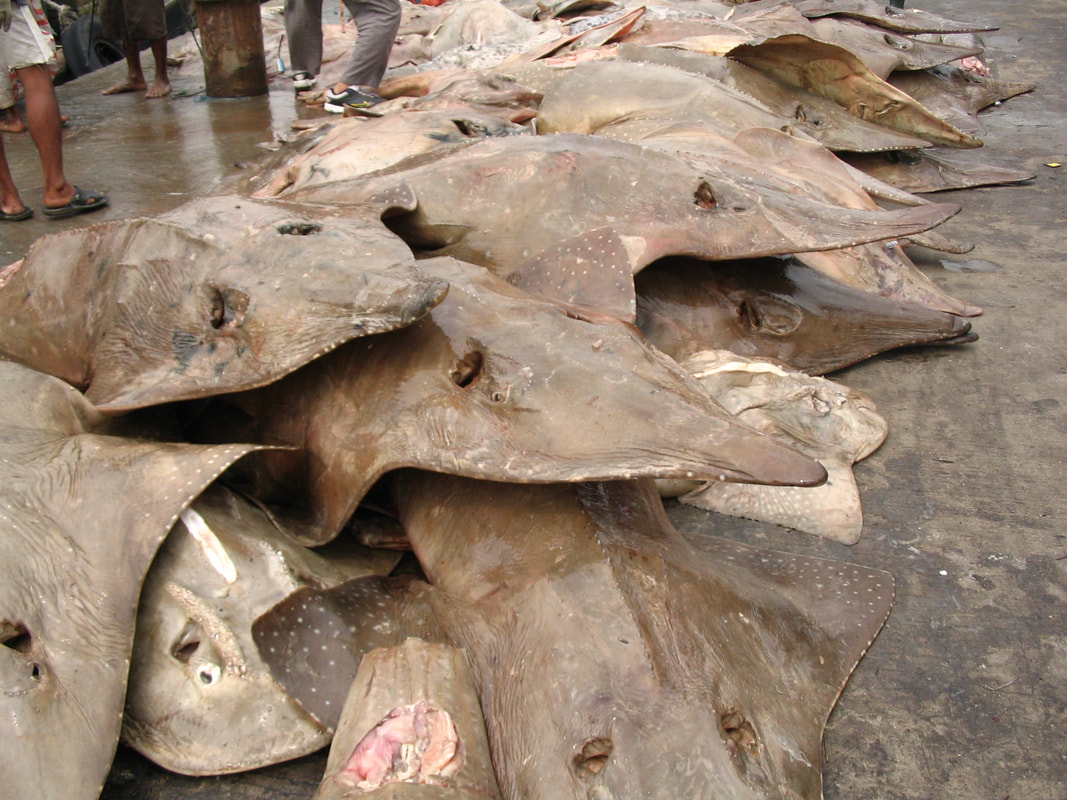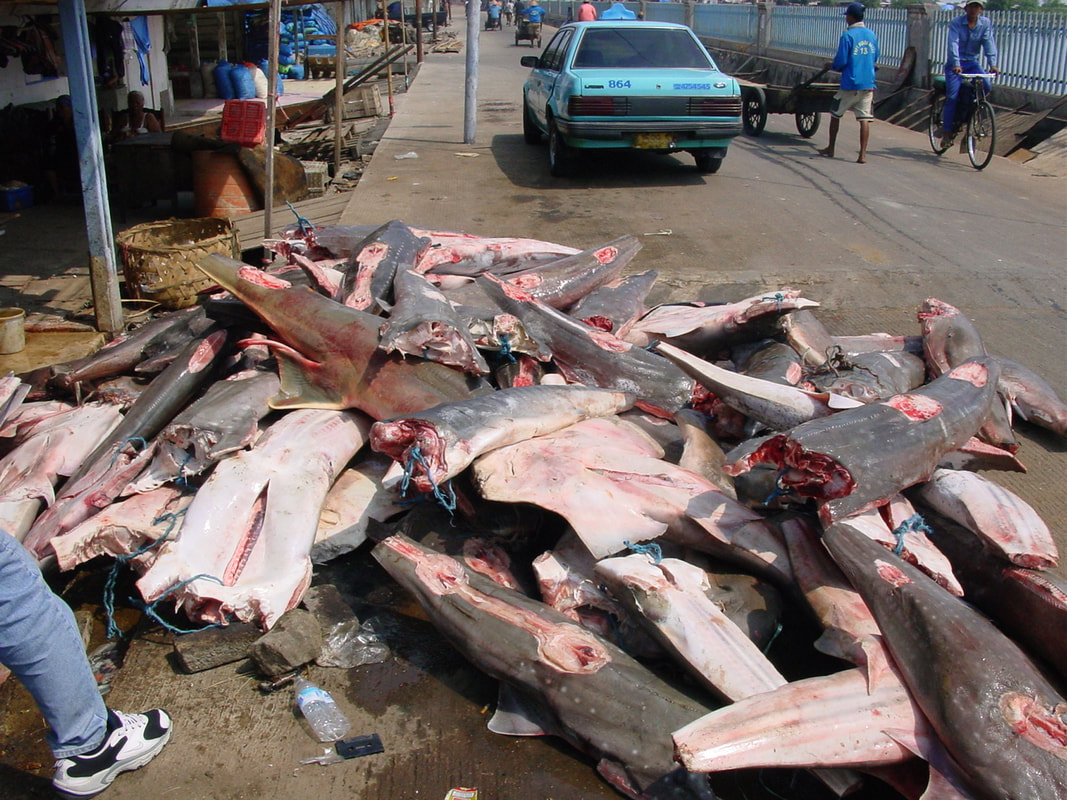Ever since JAWS hit screens 50 years ago, sharks have ranked pretty high on humanity’s nemesis list. If the eye-catching graphics of Shark Week or Sharknado are to be believed, the seas are simply swarming with toothy predators just desperate to get a taste of that sweet human meat.
But is that picture really true? Not in the least. In fact, sharks are the real victims in this story – and humans are, by multiple orders of magnitude, the villains. Let’s take a look at why that is.
How many people are killed by sharks each year?
In 2024, there were 88 confirmed shark attacks. That’s the entire year, worldwide.
Of those 88, only 47 were classed as “unprovoked” – that is, bites on a live human within the shark’s habitat without any provocation from the victim. Of those 47, only four were fatal.
Now, granted, 2024 was a particularly slow year for shark bites. According to the Florida Museum of Natural History’s International Shark Attack File, the 20-year average is a whopping… 67 unprovoked bites annually – of which just six are fatal.
Is that a lot?
No.
More people die in a typical year from trying to take a selfie […] and falling off a cliff, than are killed by sharks.
David Shiffman
Oh, you wanted more than that? Okay, how about this: between 1959 and 2010, in the coastal US, you were more than 75 times more likely to die from being struck by lightning than from being attacked by a shark. There were nearly five times as many fatal bear attacks as shark attacks in the US and Canada between 1900 and 2009; more than five times as many fatalities from dog bites than shark bites between 2009 and 2018; heck, the number of bites from New Yorkers alone outnumber those from sharks by a factor of about 140, and that’s without even leaving the tri-state area.
The “short answer,” says David Shiffman, marine conservation biologist and author of Why Sharks Matter, is that sharks are simply “not very” dangerous.
“In a typical year, more people die from flowerpots falling on their head from above when they walk down the street than are killed by sharks,” Shiffman tells IFLScience. “More people die in a typical year from trying to take a selfie […] and falling off a cliff, than are killed by sharks.”
And it’s not like they haven’t had the opportunity. The conditions that bring humans to the shore are often the same ones that attract sharks – the warmer weather can trigger pupping season, which requires shallower waters. Alternatively, they, like us, might just be enjoying the sun.
“Sharks will be here for the summertime and then, when our water gets too cold, they migrate down to Mexico,” Patrick Rex, a lab technician at Cal State Long Beach’s Shark Lab, told the LA Times in 2023.

They’re only little, they can’t go too deep. Black tipped reef shark nursery in French Polynesia.
Image credit: Danita Delimont/Shutterstock.com
If you’re surfing, too, you’ve likely been sharing the water with a shark – and a hungry one, at that: “People surf where there are good waves,” explained Gavin Naylor, director of the Florida Program for Shark Research, in a statement earlier this year, “and where there are good waves, there’s turbidity, and where there’s turbidity, there are often bait fish that attract sharks.”
Basically, “if you have been in the ocean, there has been a shark not that far from you,” Shiffman tells IFLScience. “It knew you were there, even if you didn’t know it was there, and it left you alone and you had a pleasant time in the ocean.”
What can we do about it?
Do about… what? The sharks clearly aren’t much of a problem – as Rex told the LA Times, they evidently “tend to mind their own business.”
Still, if you’re a real galeophobe, there are some precautions you can take to reduce your risk of shark attack even further. For example, don’t go into the water alone, or wear flashy or high-contrast items – it might make a nearby shark confuse you for a fish. Similarly, don’t wade into turbulent or dirty water, since that “reduces visibility in the water, making it harder for sharks to see,” Naylor pointed out. “Some of them make mistakes.”
Avoid the water at dawn or dusk – that’s when sharks hunt – and look out for diving seabirds, since they go after the same prey as sharks, and their presence might therefore mean sharks are nearby. In fact, avoid waters where any species is hunting fish, humans included – and don’t fall for that old urban legend about dolphins and sharks never being in the same area at the same time; it’s simply not true.
As for more official countermeasures, though – well, shark attacks simply aren’t a big enough problem to merit any.
“Some people are hurt by sharks. I don’t want to minimize that,” Shiffman tells IFLScience. “But when you’re talking about policy responses, it’s really important to consider the relative risk and cost benefit. Sharks are just not something you need to be worried about in their capacity as a threat to you.”
How many sharks are killed by people each year?
For a long time, there wasn’t really a good answer to this question. It’s not that we didn’t have the data, it’s just that it was too widely dispersed, collected by various teams and agencies around the world, and held to no single standard or methodology.
That changed last year when a team of Canadian and Californian researchers compiled the first-ever global tally of shark fishing mortality – and the results weren’t pretty. Despite increasing legislation to protect shark species around the world, the number of shark deaths due to humans was estimated at a staggering 101 million in 2019.
And that, the authors added, is most likely a significant underestimate.
Humans are killing more sharks than sharks are having babies.
David Shiffman
“We found that despite myriad regulations intended to curb shark overfishing, the total number of sharks being killed by fisheries each year is not decreasing,” senior author Darcy Bradley, an adjunct faculty member at UC Santa Barbara and a scientist with the Nature Conservancy in California, explained in a statement at the time. “If anything, it’s slightly increasing.”
Is that a lot?
It’s not so much “a lot” as it is “a veritable selachian apocalypse”, to be honest.
“Humans are killing more sharks than sharks are having babies,” Shiffman tells IFLScience. “That’s basically what overfishing means.”
It’s “a big problem for lots of species,” Shiffman points out – but sharks are particularly vulnerable. “They have relatively few babies, relatively infrequently, relatively late in life,” he explains, and as a result, “their populations just don’t bounce back that fast.”
But the numbers, mind-boggling though they are, don’t tell the whole story. Often overlooked is the particular species that are most at risk: “it tends to be a lot of species that people have not heard of,” Shiffman says. “They tend to be small regional endemics, which means they’re only found in a particular area.”
“You’d be shocked at how many people I talk to who wrongly believe great whites are the most threatened species. They’re just not,” he tells IFLScience. “There’s a really cool species that are called glyphis sharks – they live in rivers. They’re critically endangered. There are wobbegongs, which – if you’ve ever been to aquarium, you often see them, they sort of sit on the bottom and they look like they’re covered in a big scraggly beard. They’re critically endangered.”
“There’s a lot of species that are in trouble,” he says.
And what’s behind this mass shark-icide? The answer is as mundane as it is depressing: it’s just fishing. Fishing for shark meat; fishing for sharks’ meat; basically, modern industrial fishing is so massive and unsustainable that it’s single-handedly driving whole species into extinction.

Wedgefish (Rhynchobatus spp) landings at Muara Angke, Jakarta. Seven of the eight species of this shark-like ray family are listed as Critically Endangered by the IUCN.
Image credit: Australian National Fish Collection, CSIRO, via IUCN SSC Shark Specialist Group
“Most people think of fishing as what they do for fun. On the weekends, they take a fishing rod, they go fishing off a little boat or a pier, they catch one fish at a time. If it’s not what they want, they throw it back,” Shiffman told IFLScience. “Modern commercial fishing gear is not that.”
Rather, he explained, “the nets are big enough that multiple 747 airliners can fit at the mouth. An industrial long line can have 20,000 baited hooks on it. So, you’re going to catch other stuff.”
And whether caught on purpose or as this “bycatch”, the result is the same: millions of dead sharks. It’s the most pressing problem for the animals “by far,” Shiffman says. “So much so that there is really not a number two threat.”
What can we do about it?
Here’s the thing: the majority of the problem is likely not where you think.
“The threat to sharks that everyone has heard of is shark finning and the shark fin soup trade,” Shiffman tells IFLScience. “And that’s a problem, but it’s much less of a problem than it used to be.”
Indeed, in the last two decades, something like 70 percent of maritime jurisdictions have brought in legislation against shark finning – and anecdotally at least, the practice has waned accordingly. But ironically, it could be that these anti-finning measures are partly to blame for the increasing mortality: boats that once would remove the fin and throw the rest of the shark back into the water to die are now obliged to keep the whole animal, adding fuel to a recent boom in the shark meat trade.
“Now there’s this market for cutting [the sharks] up and putting them in ceviche,” Boris Worm, a marine ecologist at Dalhousie University and research lead on the shark mortality tally, told Science. And while that is less wasteful, he said, “a dead shark’s a dead shark.”

Making finning illegal may have just resulted in the rest of the shark being used as well, rather than fewer dead sharks. Wedgefish and Sawfish, listed as Endangered and Critically Endangered by IUCN, at Muara Angke, Jakarta.
Image credit: Australian National Fish Collection, CSIRO, via IUCN SSC Shark Specialist Group
If you’ve bought food from a fish market recently – or the supermarket, or even the pet store – you’ve likely contributed to the problem, even unwittingly. Visitors to fish and chip shops in the UK and Australia, for example, may have bought “rock salmon” or “flake” – but “there’s no such thing” as those species, Shiffman explains. “That’s a shark.”
Even when opting for more sustainable species, you might end up chowing down on an endangered shark by accident. “It’s almost impossible for consumers to know what they are buying,” Cathy Hobbs, first author on a paper investigating the extent of endangered sharks in British chip shops and fishmongers, said in a statement in 2019. “People might think they’re getting a sustainably sourced product when they’re actually buying a threatened species.”
The good news is, we’re not totally powerless here. “In the United States, we have what’s called Seafood Watch, which is run by the Monterey Bay Aquarium,” Shiffman tells IFLScience. “It’s an app – you tell it where you live, and it organizes the most commonly available seafood in your area into three lists: green – you can eat this, it’s environmentally friendly; yellow, maybe every once in a while, but don’t make a habit of it; and red, which is, maybe order the chicken.”
Worldwide, you can look out for the Marine Stewardship Council’s blue label – an award given only to wild fish or seafood from fisheries that have been certified as sustainable.
And here’s the kicker: it’s actually pretty easy to fish in a way that minimizes the impact on sharks. It can be as simple as when or where you fish, or what bait you use. “There are some devices that can be put on fish and gear that repel sharks but don’t repel tuna,” explains Shiffman. “There are there are hooks that you can use that if a shark is caught on them […] it’s more likely they’ll be alive when they get to the boat, so they can be released.”
Greater accountability and regulations for fleets and fishing companies are also important, according to Worm’s 2019 team – it’s not enough to introduce laws; somebody needs to check they’re being followed, and that shark catch reports are accurate.
“There is a path forward to avoid a global extinction crisis for sharks,” said Maria Deng Palomares, senior scientist and project manager at the University of British Columbia’s Sea Around Us initiative, and author of the shark mortality tally paper. “But the time to act is now.”
Source Link: How Many People Do Sharks Kill Each Year... Or Is That The Wrong Question?